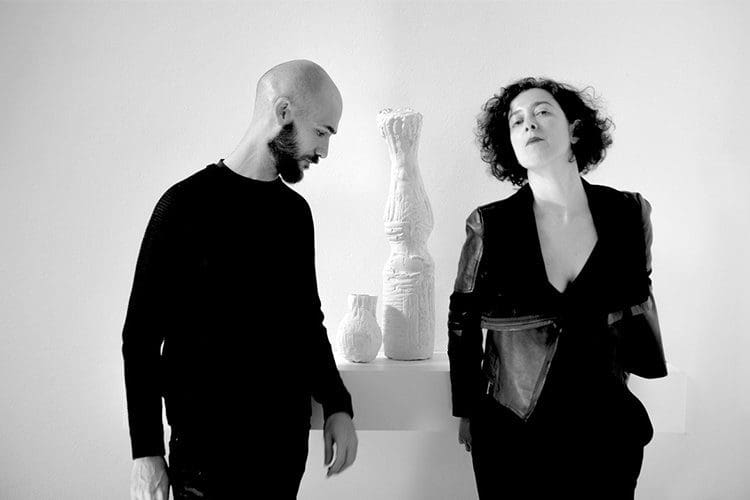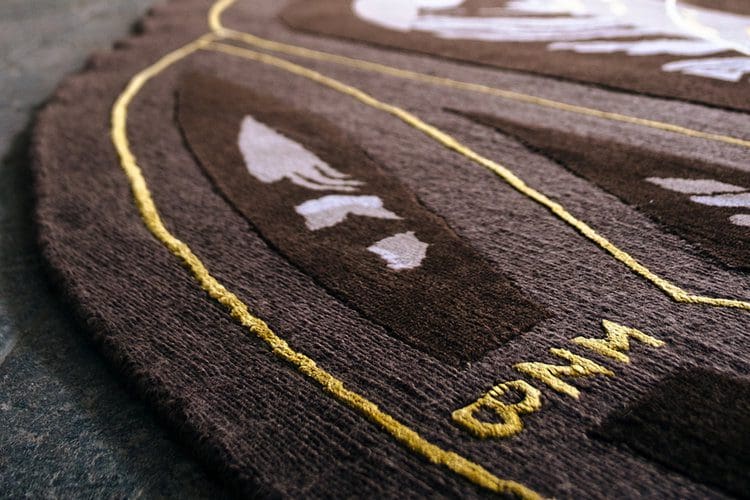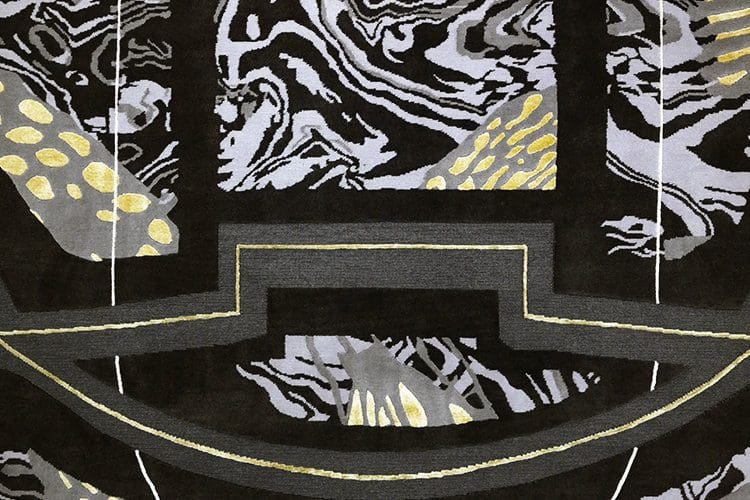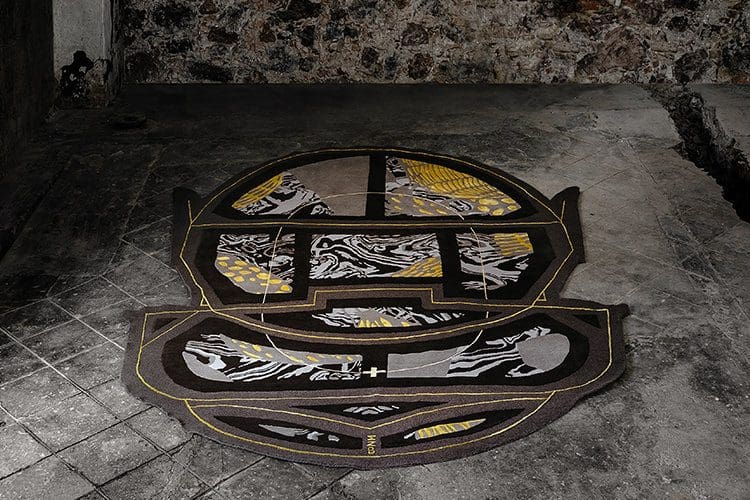“Pórtico” explores the connections and contrasts between two different worlds. A door that leads to the fifteenth century, where the darkness of the port of Seville contrasts with the luminosity from the “New World”. An imaginary cartography created from the selection, reinterpretation and fusion of diverse representative elements of that historical moment. The structures of the caravels and the textures of the marble are highlighted.
Pórtico was made with tibetan hand knotted New Zealand wool with silk
240 x 300cm




Ahead of showing Weaving Design Stories at ZONA MACO 2019 (February 6 – 10, 2019) we spoke to each of the participating designers and studios to tell us more about their designs and the ideas behind them.
Todomuta is a design studio based in Seville, Spain that was born from the shared desire of Laura Molina and Sergio Herrera to investigate and explore the frontiers between art, design and avant-garde craftsmanship.

Odabashian: Please can you tell us about the origins of Todomuta?
Laura Molina: Myself and Sergio both have backgrounds in the art world, we worked together for an important company that designed art exhibitions and museum exhibits. During that time there together we learned a lot about design and business, this experience helped us form a new design perspective, with no boundaries and many overlapping connections. In 2011 we formed Todomuta but it was a few years before we were able to consolidate the aesthetics and find our own voice. Our aim is to fuse two creative worlds, the first one focused on the object-sculpture world, and the second one where graphics and photography combine into something new.
What type of projects do you typically work on?
We work on the creation of our own collections, and we also work on the art direction and the development of exclusive projects for our clients (brands, interior designers, architects, galleries). Those are the two most common formats our work takes. We also collaborate with technological institutions, promoting a more experimental work and dissemination of design and creative processes.
With regard to our collections, we are focused on the creation of unique pieces, limited editions away from the market tendencies, they respond to our aesthetic values where there is especial attention paid to every detail. These pieces are between art and design but there is always a story, we like to explore the idea of ‘design as a transmitter of knowledge’.

How would you describe the style of your work?
For us it’s very important that the studio has its own identity, it’s own voice. In this sense, our work has been framed within futurism but very connected with tradition, a timeless style that mixes sophistication and wildness. We are very attracted to the idea of creating new relationships between things that may seem impossible to connect. We are always looking to explore this language and expression through our projects and to go deeper into it. By being true to our vision and principles we have gradually managed to create a signature style.
Please can you explain your approach to the Weaving Design Stories brief?
The rug designed for this project is a mestizaje; a door that leads to the fifteenth century, where the darkness of the port of Seville contrasts with the brightness from the ‘New World’. An imaginary cartography created from the selection, reinterpretation and fusion of different but representative elements of that historical moment. Emphasising the presence of the internal wooden structures that conformed the ship’s hull, when chartered from the port of Seville, such as the textures coming from the marble used on the ‘The Archivo General de Indias’ (General Archive of the Indies); now housed in the former merchant’s exchange house of Seville (Casa Lonja de Mercaderes). A texture that reminds us of the great Guadalquivir River, a place where the merchant ships berthed, at the Port of Seville, and the main maritime route for Atlantic traffic for more than 200 years.
“Pórtico” is the construction of a unique stage, which allows the viewer to be immersed in a sublime reverie, inviting him to rediscover and think beyond the visual aspects of the rug.

What is the main connection of your design to the silk route?
We focused on Seville during the XV-XIV Century because this city was a strategic point that allowed the permeability of the silk route to the ‘New World’.
What were some of the key decisions in creating your design?
We were surprised by the wide range of possibilities in production techniques. In the end the design was produced using the Tibetan knot technique. It’s made from a combination of wool and silk. The color palette is characterised by the predominance of dark colours with very specific touches of light that come from ocher and gold tones.

What aspects of the final rug are you happiest with?
I think the most interesting thing about this design is its capacity to surprise, both on the design and the production. We believe the production phase is a decisive moment, since it is through it that the piece becomes a reality.
Another aspect that we really liked about the final result was the objectual character of this piece.
Finally, there are three main ideas that we would like to highlight from this experience:
Innovation through tradition – The piece embodies the combination of artisanal manufacturing processes with a contemporary conceptualisation.
Design as a collaborative project among professionals – The conceptualisation, design, development and production has been a process of communication and understanding between the different professionals involved (production team, curators, designers and craftsmen in charge of production).
Design as a knowledge transmitter – Pórtico is, in short, a piece that represents a dialogue between cultures.

